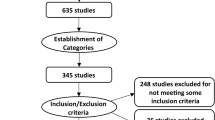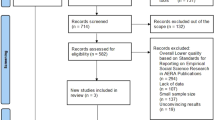Abstract
Augmented reality (AR) is an educational medium increasingly accessible to young users such as elementary school and high school students. Although previous research has shown that AR systems have the potential to improve student learning, the educational community remains unclear regarding the educational usefulness of AR and regarding contexts in which this technology is more effective than other educational mediums. This paper addresses these topics by analyzing 26 publications that have previously compared student learning in AR versus non-AR applications. It identifies a list of positive and negative impacts of AR experiences on student learning and highlights factors that are potentially underlying these effects. This set of factors is argued to cause differences in educational effectiveness between AR and other media. Furthermore, based on the analysis, the paper presents a heuristic questionnaire generated for judging the educational potential of AR experiences.
Similar content being viewed by others
References
Azuma RT (1997) A survey of augmented reality. Presence Teleoper Virtual Environ 6:355–385
Milgram P, Kishino F (1994) A taxonomy of mixed reality visual displays. Trans Inf Syst E77-D:1321–1329
De Lisi R, Wolford JL (2002) Improving children’s mental rotation accuracy with computer game playing. J Genet Psychol 163:272–282
Billinghurst M (2002) Augmented reality in education. New Horizons Learn. http://www.newhorizons.org/strategies/technology/billinghurst.htm. Accessed 20 Jan 2009
Shelton B, Hedley N (2003) Exploring a cognitive basis for learning spatial relationships with augmented reality. Technol Instr Cogn Learn 1:323–357
Kerawalla L, Luckin R, Seljeflot S, Woolard A (2006) “Making it real”: exploring the potential of augmented reality for teaching primary school science. Virtual Real 10:163–174
Merians AS, Jack D, Boian R, Tremaine M, Burdea GC, Adamovich SV, Recce M, Poizner H (2002) Virtual reality—augmented rehabilitation for patients following stroke. Phys Ther 82:898
Tang A, Owen C, Biocca F, Mou W (2003) Comparative effectiveness of augmented reality in object assembly. In: Proceedings of the conference on human factors in computing systems—CHI ‘03, p 73
Xu Y, Mendenhall S, Ha V, Tillery P, Cohen J (2012) Herding nerds on your table: NerdHerder, a mobile augmented reality game. In: Proceedings of the 2012 ACM annual conference extended abstracts on human factors in computing systems extended abstracts, pp 1351–1356
Sony Computer Entertainment. EyePet TM. http://www.eyepet.com/
Juan C, Beatrice F, Cano J (2008) An augmented reality system for learning the interior of the human body. In: International conference on advanced learning technologies, Santander, Cantabria, Spain, pp 186–188
Bujak KR, Radu I, Catrambone R, MacIntyre B, Zheng R, Golubski G (2013) A psychological perspective on augmented reality in the mathematics classroom. Comput Educ 68:536–544
Lindgren R, Moshell JM (2011) Supporting children’s learning with body-based metaphors in a mixed reality environment. In: Proceedings of the 10th international conference on interaction design and children. ACM, pp 177–180
Macchiarella ND, Liu D, Gangadharan SN, Vincenzi DA, Majoros AE (2005) Augmented reality as a training medium for aviation/aerospace application. In: Annual meeting of the human factors and ergonomics society, Orlando, FL, USA, pp 2174–2178
Macchiarella ND, Vincenzi DA (2004) Augmented reality in a learning paradigm for flight aerospace maintenance training. In: Digital avionics systems conference, vol 1, Salt Lake City, UT, USA, pp 5.D.1–5.1-9
Valimont RB, Vincenzi DA, Gangadharan SN, Majoros AE (2002) The effectiveness of augmented reality as a facilitator of information acquisition. In: Digital avionics systems conference, vol 2, Irvine, CA, USA, pp 7C5-1–7C5-9
Vincenzi DA, Valimont B, Macchiarella N, Opalenik C, Gangadharan SN, Majoros AE (2003) The effectiveness of cognitive elaboration using augmented reality as a training and learning paradigm. In: Annual meeting of the human factors and ergonomics society, Denver, CO, USA, pp 2054–2058
Hedley NR (2003) Empirical evidence for advanced geographic visualization interface use. In: International cartographic congress, Durban, South Africa
Sin AK, Zaman HB (2010) Live solar system (LSS): evaluation of an augmented reality book-based educational tool. In: International symposium in information technology, Kuala Lumpur, Malaysia, pp 1–6
Seo J, Kim N, Kim G (2006) Designing interactions for augmented reality based educational contents. In: International conference on edutainment, Hangzhou, China, pp 1188–1197
Chen Y-C (2006) A study of comparing the use of augmented reality and physical models in chemistry education. In: International conference on virtual reality continuum and its applications, Hong Kong, China, pp 369–372
Nischelwitzer A, Lenz F-j, Searle G, Holzinger A (2007) Some aspects of the development of low-cost augmented reality learning environments as examples for future interfaces in technology enhanced learning. In: Proceedings of the 4th international conference on universal access in human-computer interaction: applications and services. Springer, pp 728–737
Quarles J, Lampotang S, Fischler I, Fishwick P, Lok B (2008) A mixed reality approach for merging abstract and concrete knowledge. In: Virtual reality conference, Reno, NV, USA, pp 27–34
Chen C-h, Wu FG, Su CC, Lee P-y (2007) Augmented interface for children Chinese learning. In: Seventh IEEE International Conference on Advanced Learning Technologies (ICALT 2007). IEEE Computer Society, pp 268–270
Freitas R, Campos P (2008) SMART: a SysteM of Augmented Reality for Teaching 2nd grade students. In: Proceedings of the 22nd British HCI Group annual conference on people and computers: culture, creativity, interaction, vol 2, Swinton, UK, pp 27–30
Henderson SJ, Feiner S (2009) Evaluating the benefits of augmented reality for task localization in maintenance of an armored personnel carrier turret. In: International symposium on mixed and augmented reality, Orlando, FL, USA, pp 135–144
Henderson S, Feiner S (2011) Exploring the benefits of augmented reality documentation for maintenance and repair. IEEE Trans Visual Comput Graph 17:1355–1368
Pathomaree N, Charoenseang S (2005) Augmented reality for skill transfer in assembly task. IEEE Int Workshop Robot Human Interact Commun 500–504
Tang A, Owen C, Biocca F, Mou W (2003) Comparative effectiveness of augmented reality in object assembly. In: Conference on computer graphics and interactive techniques, Ft. Lauderdale, FL, USA, pp 73–80
Tang A, Owen C, Biocca F, Mou W (2002) Experimental evaluation of augmented reality in object assembly task. In: International symposium on mixed and augmented reality, Darmstadt, Germany, p 265
Morrison A, Oulasvirta A, Peltonen P, Lemmela S, Jacucci G, Reitmayr G, Nasanen J, Juustila A (2009) Like bees around the hive: a comparative study of a mobile augmented reality map. In: Proceedings of the SIGCHI conference on human factors in computing systems. ACM, pp 1889–1898
Billinghurst M, Belcher D, Gupta A, Kiyokawa K (2003) Communication behaviors in colocated collaborative AR interfaces. Int J Human–Comput Interact 16:395–423
Kaufmann H, Dünser A (2007) Summary of usability evaluations of an educational augmented reality application. In: Proceedings of the 2nd international conference on virtual reality. Springer, pp 660–669
Juan CM, Toffetti G, Abad F, Cano J (2010) Tangible cubes used as the user interface in an augmented reality game for edutainment. In: 2010 10th IEEE international conference on advanced learning technologies, pp 599–603
Liu T-Y, Tan T-H, Chu Y-L (2009) Outdoor natural science learning with an RFID-supported immersive ubiquitous learning environment. J Educ Technol Soc 12:161–175
Dunleavy M, Dede C, Mitchell R (2009) Affordances and limitations of immersive participatory augmented reality simulations for teaching and learning. J Sci Educ Technol 18:7–22
Hornecker E, Dünser A (2007) Supporting early literacy with augmented books—experiences with an exploratory study. In: Proceedings of the German Society of informatics annual conference (GI-Jahrestagung)
Mayer RE, Moreno R (2003) Nine ways to reduce cognitive load in multimedia learning. Educ Psychol 38:43–52
Shelton B, Hedley N (2004) Exploring a cognitive basis for learning spatial relationships with augmented reality. Technol Instr Cogn Learn 1(4):323–357
Goldin-Meadow S, Cook SW, Mitchell ZA (2009) Gesturing gives children new ideas about math. Psychol Sci 20(3):267–272
Glenberg AM, Brown M, Levin JR (2007) Enhancing comprehension in small reading groups using a manipulation strategy. Contemp Educ Psychol 32:389–399
Roth W, Lawless D (2002) Scientific investigations, metaphorical gestures, and the emergence of abstract scientific concepts. Learn Instr 12:285–304
Antle AN, Corness G, Droumeva M (2009) Springboard: exploring embodiment, balance and social justice. In: Proceedings of the SIGCHI conference on human factors in computing systems (SIGCHI’09), Extended Abstracts. ACM, pp 3961–3966
Abrahamson D, Trninic D (2011) Toward an embodied-interaction design framework for mathematical concepts. In: Proceedings of the 10th international conference on interaction design and children. ACM, pp 1–10
Mautone PD, Mayer RE (2001) Signaling as a cognitive guide in multimedia learning. J Educ Psychol 93:377
Theng Y-l, Mei-ling CL, Liu W, Cheok AD (2007) Mixed reality systems for learning: a pilot study understanding user perceptions and acceptance. In: Proceedings of the 2nd international conference on virtual reality. Springer, pp 728–737
Stapleton C, Smith E, Hughes CE (2005) The art of nurturing citizen scientists through mixed reality. In: International symposium on mixed and augmented reality, Vienna, Austria, pp 2–11
Kaufmann H, Meyer B (2008) Simulating educational physical experiments in augmented reality. In: ACM SIGGRAPH ASIA 2008 educators programme. ACM, p 3
Hornecker E, Dünser A (2009) Of pages and paddles: children’s expectations and mistaken interactions with physical-digital tools. Interact Comput 21:95–107
Nakamura J, Csikszentmihalyi M (2009) Flow theory and research. In: Snyder CR, Lopez SJ (eds) Handbook of positive psychology, 2nd edn. Oxford, New York, pp 195–206
Radu I, MacIntyre B (2012) Using children’s developmental psychology to guide augmented-reality design and usability. In: 2012 IEEE international symposium on mixed and augmented reality (ISMAR), pp 227–236
Acknowledgments
The author would like to thank Jennifer M. Rodriguez of PBS KIDS Digital for her thoughtful comments.
Author information
Authors and Affiliations
Corresponding author
Rights and permissions
About this article
Cite this article
Radu, I. Augmented reality in education: a meta-review and cross-media analysis. Pers Ubiquit Comput 18, 1533–1543 (2014). https://doi.org/10.1007/s00779-013-0747-y
Received:
Accepted:
Published:
Issue Date:
DOI: https://doi.org/10.1007/s00779-013-0747-y




